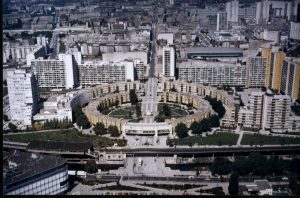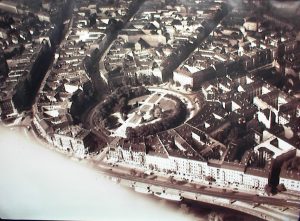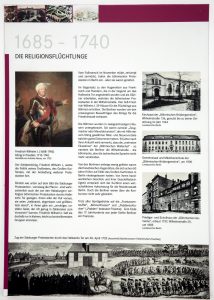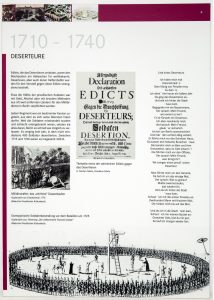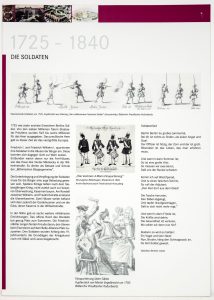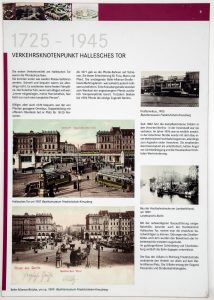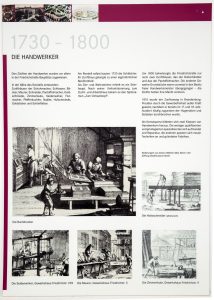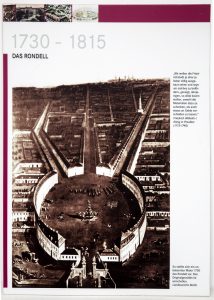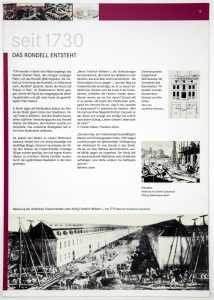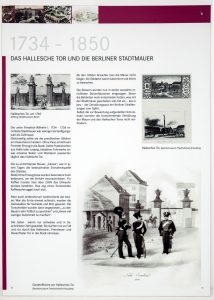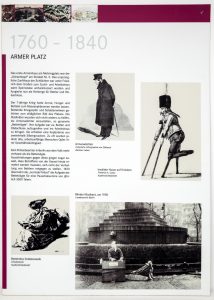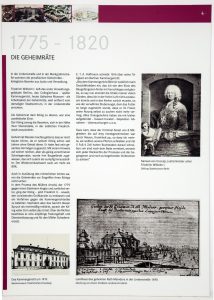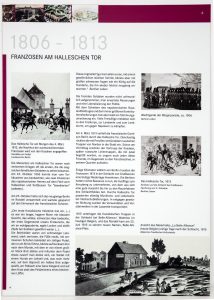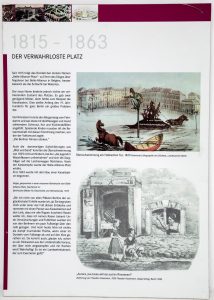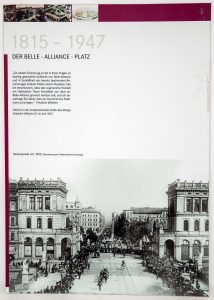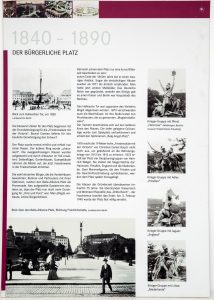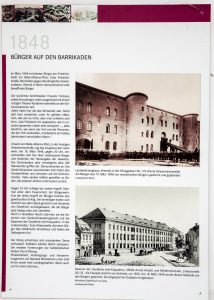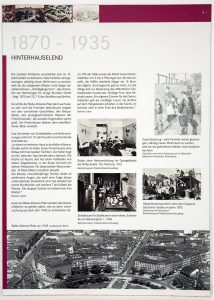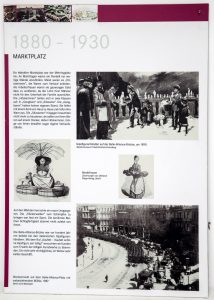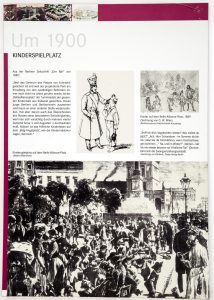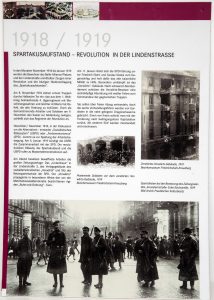FROM RONDELL TO BELLE ALLIANCE TO MEHRINGPLATZ
RONDELL – BELLE ALLIANCE PLATZ – MEHRINGPLATZ
Excerpts from the exhibition. More info see below
The exhibition was created by Kunstwelt e.V. Berlin in cooperation with the District Office Friedrichshain-Kreuzberg and Kreuzberg Museum Berlin, sponsored by: Kreuzberg Museum, Senate Department for Urban Development (social city), MKPI, Berlin and Kunstwelt.e.V. Berlin.
From 2008 to January 2017, Kunstwelt e.V. Berlin presented the exhibition to residents, interested parties and tourists on site in its exhibition rooms at Friedrichstraße 246 later at Friedrichstraße 4.
RONDELL – BELLE ALLIANCE PLATZ – MEHRINGPLATZ
Describes 300 years of European history using the example of a Berlin square. With many pictures from the Berlin State Archives and private collectors, the exhibition tells the political, social and urban planning history and development of the southern Friedrichstadt. Special emphasis is placed on the fate of the local population and the history of the various refugee movements.
The exhibition currently consists of 30 x double-sided printed boards, (German language version and English language version). Color: 4C, dimensions approx. 60 x 100.
The exhibition is supplemented by other panels and exhibits such as: Original parts of the historical park design (paving stones, fragment of one of the 4 lost sculptures, wrought-iron works), time table, historical city maps and others.
Sie basiert auf Arbeiten der „Geschichtswerkstatt Mehringplatz“ aus dem Jahre 1986 in Zusammenarbeit mit dem „Kunstamt Kreuzberg“ und dem Jugend- und Kulturzentrum „Antenne“. 2007 überarbeitet und erweitert von Kunstwelt e.V. Berlin.
Publisher: Kunstwelt e.V. Berlin in cooperation with the Verein zur Erforschung und Darstellung der Geschichte Kreuzberg e.V. Berlin. Direction: Bonger Voges Texts and research: Karin Langer, Gudrun Krieg (1986) Revision: Tobias Schmidt, Ariane Novel, Magda Albrecht, Christiane Trenka, Jana Brambach, Andrea Richter, Inez Schweichler English translation: Darius Ossami, Andrea Richter, Gregor Stiebert, Inez Schweichler English proofreading: Andrew Carter Editing: Martin Düspohl, Bonger Voges Image research: Gabriele Faber, Ken Frege, Michael Zeidler, Karolin Korthase Image editing: Markus Schwill Graphic design: Ariadne & Wolf GmbH Graphics: Markus Schwill, Christiane Trenka Image sources: Friedrichshain-Kreuzberg District Museum, Berlin State Archives, Stiftung Stadtmuseum Berlin, Bildarchiv Preußischer Kulturbesitz Printing, production, exhibition technology: MKPI Marketing AG, Berlin
The exhibition was funded by the program "Soziale Stadt"/ Senatsverwaltung für Stadtentwicklung, Berlin with the kind support of Quick Trade GmbH and MKPI Marketing AG, Berlin.
© Berlin 1986 Kunstamt Kreuzberg, Berlin © Berlin 2007 KUNSTWELT BERLIN
Kunstwelt e.V. Berlin. Friedrichstraße 1, 10969 Berlin, www.kunstwelt-berlin.de
PRESS RELEASE
Victory symbols destroyed?
The mystery surrounding the four missing sculptures around the Peace Column on Kreuzberg's Mehringplatz seems to have been solved. For weeks, conceptual artist Bonger Voges has been searching for the statues, which have disappeared without a trace since a night of bombing on February 3, 1945. Now the Kreuzberg Museum on Adalbertstraße has come forward with a tip: archived files of the district office from 1952 state that the sculptures were "completely destroyed" and "no longer exist".
Nevertheless, Voges does not want to give up. He takes note of the museum's hints, but it is nevertheless quite possible that the figure groups have "survived" and are in some depot or lapidarium: "We will not completely abandon the search and are grateful for any further tip." The missing stone images are works of sculptors A. Fischer and J. Franz, which were erected in 1875 around the 19-meter-high Peace Column. The column commemorates the wars of liberation from 1813 to 1815, and the groups of figures in turn symbolize the victorious powers involved - Prussia, England, the Netherlands and the Royal House of Hanover. As reported, Bonger Voges has developed a concept for the redesign of Mehringplatz - supported by the citizens' initiative "Oracle of Berlin," which is dedicated to the restoration of the former "Belle Alliance Square" and now has more than 50 members. Voges is the chairman. Initial repair work on the eye-catching perimeter buildings - designed by former Senate Building Director Werner Düttmann and famous architect Hans Scharoun - has already begun. Several facades have already been renovated, and now the now overgrown green spaces are to be reorganized. Those who want to find out more about the plans have the opportunity to do so in a permanent exhibition at Friedrichstrasse 246. They are also grateful for any information about the whereabouts of the missing sculptures. Information can also be obtained by calling the telephone number ...
Berliner Morgenpost Monday, Uwe Dannenbaum 13. March 2000
The oracle of Berlin in search of clues
A mystery that has remained unsolved for 55 years. Where have the four sculptures that stood around the Peace Column on Kreuzberg's Mehringplatz until the end of the war gone? A citizens' initiative has now taken on the task of tracking down the missing statues. The same goes for two lost groups of figures that belong to the Halleschen Tor Bridge. In addition, the 50 or so members are campaigning for a radical redesign of the square - one of the most important intersections in Berlin's urban landscape.
The history of the historic area at the upper end of Friedrichstraße quite far back. In 1734, three squares were laid out in Berlin - the octagon (Leipziger Platz), the Karee (Pariser Platz) and the Rondell, today's Mehringplatz. Until 1947 it bore the proud name Belle-Alliance-Platz, before it was renamed after the publicist and historian Franz Mehring. The center of the square is adorned by a peace column - in memory of the wars of liberation (1813-1815). Around the column stood four sculptures, erected in 1875 - works of sculptors A. Fischer and J. Franz. The symbolic figures stood for the victorious powers involved - Prussia, England, the Netherlands and the Royal House of Hanover. In the last days of the war in 1945 the square presented a picture of devastation. Bodies were laid out in the center - victims of the terrible nights of bombing. The survivors lived in houses without roofs or outer walls, or in the cellars in cramped quarters. Only hesitantly did the clean-up work begin. In this devastating chaos, most of the ornamental, magnificent architectural elements were lost. Not only the four sculptures around the Peace Column, but also the group of figures on the nearby Halleschen Tor Bridge - works by the sculptors Otto Geyer and Julius Moser. Two of the bridge figures could be tracked down again in 1986 - with the help of the Berliner Morgenpost. Today they stand in their old place. Now the citizens' initiative "Oracle of Berlin", supported by the Senate and the district office, is campaigning for a redesign of the square. The unusual name of the association is deliberately meant to be a symbolic allusion to the rondel and the problems of the square. If you want to know more about it, the active association has a permanent exhibition at Friedrichstrasse 246. The chairman of the board, Bonger Voges, advocates above all for a "continuous walkable visual axis from Hallesches Tor to Friedrichstrasse". According to Voges, "This axis is currently being downright blocked by a retrofitted concrete bar at the Halleschen Tor bridge and by several erected glass containers on Friedrichstrasse." Moreover, the initiative calls for "tidying up the overgrown green spaces and a new color scheme for the ring buildings," which were designed by none other than Hans Scharoun. Likewise, the disappeared sculptures are to be searched for - in magazines, parks or depots. Any tips will be accepted at the telephone number 252 94 666.
Berliner Zeitung Wednesday, 30. August 2000 Andreas Kopietz
In search of the victorious powers
Artist Bonger Voges is researching the four missing statues from Mehringplatz.
An artist is in search of the statues from Mehringplatz. Until before the end of the war, the Peace Column was surrounded by four groups of sculptures. But although two figures survived the war, they too have disappeared. According to a list of monuments from 1952, which can be found in the Kreuzberg Museum, the figures were destroyed on the night of the bombing on February 3, 1945. This does not seem to be true. Conceptual artist Bonger Voges, who is working on the transformation of Mehringplatz into the "Oracle of Berlin," investigated with his association "Oracle of Berlin" and found out: "The sculptures were not completely destroyed, they were still partly there." This is also proven by the photo from 1947. In the Kreuzberg Museum, the association also found a second list from 1947, according to which " 2 groups were severely damaged" and "2 groups could no longer be found" in that year. Bonger Voges, who wants to transform Mehringplatz into a large street oracle based on the Chinese model, would like to restore at least part of the square's historical significance by reinstalling the figures. The Peace Column, which still stands on Mehringplatz, actually forms an ensemble with the sculptures: it commemorates the wars of liberation from 1813 to 1815, and the four missing figures - created between 1872 and 1875 by sculptors H. Walger and J. Franz - symbolized the victorious powers of Prussia, Hanover, England and the Netherlands. Matin Düspohl, director of the Kreuzberg Museum, fears that the sculptures no longer exist. Bonger Voges, on the other hand, suspects that they were dismantled before the square was redesigned: "Maybe they are still in some storage or in someone's garden." Like Voges, Wolfgang Liebenhenschel, who headed the Kreuzberg building department until his retirement, is interested in the whereabouts of the sculptures. A few years ago, he found two statues thought lost that had stood at Hallesches Tor, the entrance to Mehringplatz. They have since returned to their location. Liebenhenschel also rediscovered marble columns from the former elevated train arcades - they were lying with a Kreuzberg stonemason who was in the process of chiseling gravestones from them. The former head of the office sees one last possibility where one could still search: in the Märkisches Museum in Mitte. In its cellar, he says, there were a number of sculptures of bridges, houses and public places that had been part of the cityscape until the war.
Berliner Zeitung Wednesday, 12. April 2000 Andreas Kopietz
Sun goddess instead of Germanic warrior. What do you think?
Hier beginnt eine der berühmtesten Straßen Berlins. Der Start der Friedrichstraße will aber nicht zu ihrem Image passen. Grünflächen sind ungepflegt, Müll liegt herum, triste 70-er Jahre-Bauten sind mit Graffiti beschmiert: Der Mehringplatz ist kein Ort, an dem man gerne verweilt. Das soll sich ändern.
It was still called Belle Alliance Square when it was completely destroyed in the American bombing raid on February 3, 1945. Only the 19-meter-high Peace Column with Victoria defied the bombs and still stands today. The column was erected in 1843 in memory of the wars of liberation against the French emperor Napoleon. As well as four sculptures symbolizing the victorious powers Prussia (eagle), Hanover (horse), England (jaguar) and the Netherlands (lion). Unlike the column, however, the statues have disappeared without a trace since that night of bombing and have been completely forgotten.
Now the concept artist Bonger Voges worked out a plan to redesign the square. His concept, which is to be realized by next year, envisages combining historical elements with modern art. Under the motto "The Oracle of Berlin - Gateway to Friedrichstrasse". To this end, Bonger Voges is looking for the four lost sculptures in order to put them back in their historical location. If you know anything about these sculptures, please contact the BZ.
BZ Friday, 10. March 2000 Maxi Merkel
